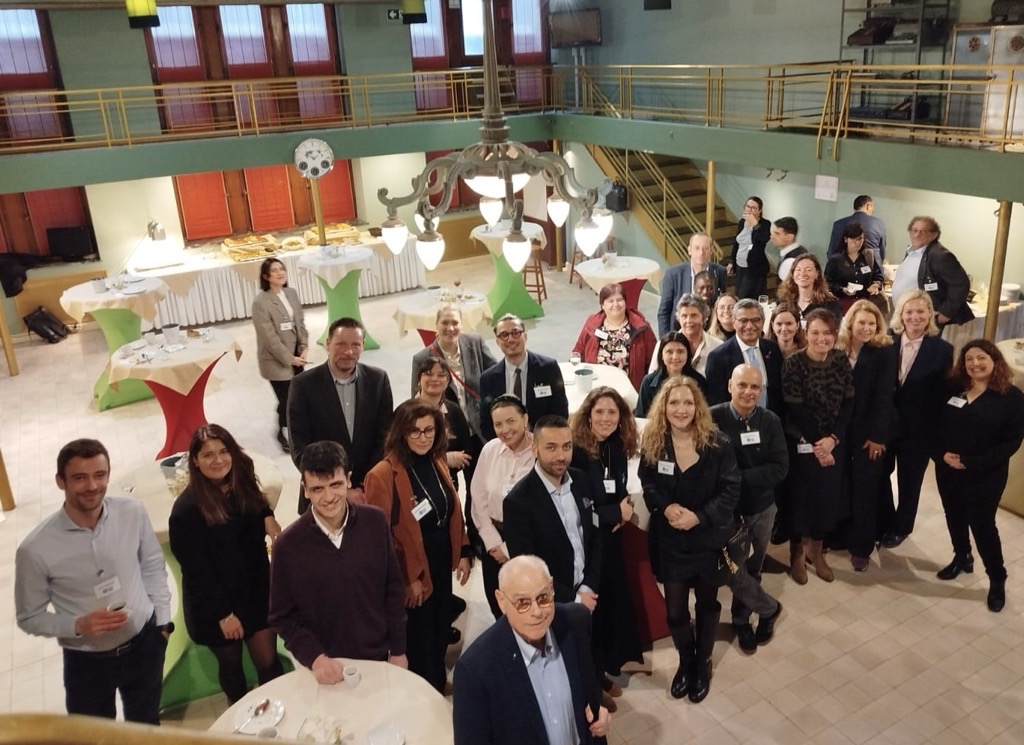
Towards A Rare Brain Disease Ecosystem
Rare Disease Day 2025 | ‘More than you can imagine’
The Rare Disease Day event 2025, organised by the European Brain Council (EBC), was held on February 20, 2025. The event gathered researchers, clinicians, policymakers, industry representatives and patient advocacy groups to address key challenges in the rare brain disease ecosystem. The discussions focused on improving patient care pathways, promoting policy action, and strengthening multidisciplinary collaboration.

The conference was opened by Suzanne Dickson, President of the European Brain Council, who welcomed participants and underscored the significance of Rare Disease Day in advocating for better policies and care models. She emphasised that a coordinated policy approach was necessary at the global, European, and national levels. She introduced the Rethinking Myasthenia Gravis project, an initiative aimed at optimising healthcare pathways for myasthenia gravis.
Participants were also welcomed by Elena Moro, President of the European Academy of Neurology (EAN), who emphasised the need to increase both awareness and research on rare brain diseases. Elena stressed the need to raise awareness among neurologists, especially as new treatments become available, and reaffirmed EAN’s collaboration with the WHO and European Reference Networks (ERNs) to enhance education, research, and patient care.
Suzanne Dickson gave the floor to Sarah Moon Howe, a Belgian filmmaker and patient advocate, presented Waiting for Zorro, a documentary illustrating the struggles of families affected by rare brain diseases. She described how delayed diagnosis, insufficient care, and lack of social support significantly impact patients and caregivers.
Session 1: Policy Commitment to Tackling Rare Diseases
The first session, which was moderated by Enrique Terol, Health Counsellor at the Permanent Representation of Spain to the EU, addressed policy actions to support rare diseases. Alexandra Heumber Perry, Chief Executive Officer at Rare Diseases International, discussed the upcoming World Health Assembly resolution on rare diseases, expected to be adopted in May 2025. She highlighted that Spain and Egypt had been leading efforts to push for a 10-year Global Action Plan, which would ensure sustained policy support.
Valentina Bottarelli, Public Affairs Director & Head of European Advocacy from EURORDIS, argued for a European-level action plan for rare diseases. She emphasized the importance of clear targets, measurable indicators, and increased funding to ensure effective healthcare access. She also stressed that mental health and social support were critical but often neglected components of rare disease care.
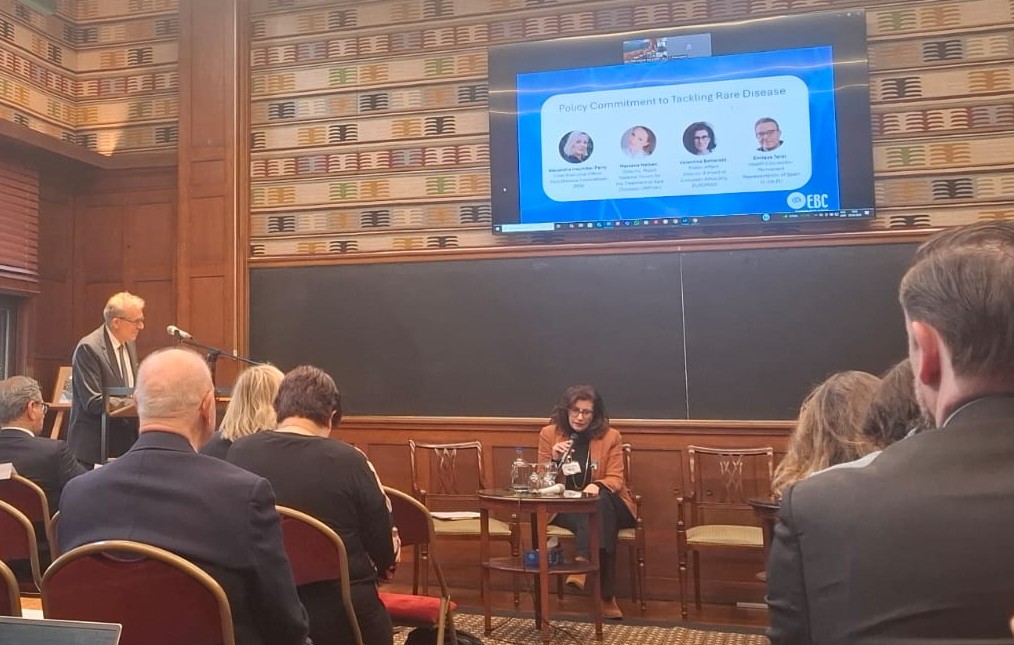
From a national policy perspective, Marzena Nelken, Director at the National Forum Orphan Poland, shared updates on Poland’s national rare disease strategy 2024-2025. The initiative includes Rare Disease Expert Centers, diagnostic pathway improvements, and the development of a national rare disease registry. However, she noted that social and psychological support systems still required significant improvement.
The session concluded with a discussion on the integration of healthcare policies at various levels, financial constraints, and the need for multi-stakeholder governance to ensure the sustainability of rare disease initiatives.
Session 2: Unmet Needs and Patient Care Pathways for Rare Disease in Europe
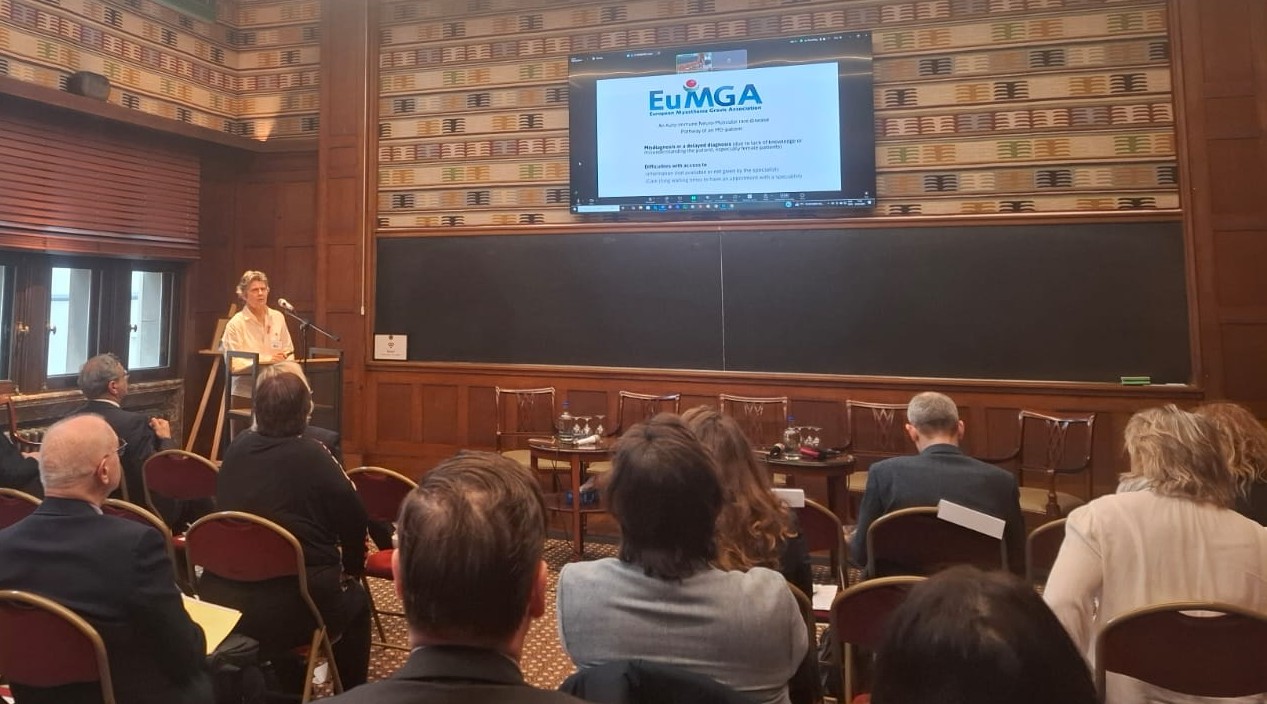
The second session was moderated by Vinciane Quoidbach, EBC Research Project Manager who introduced representatives of patient organisations exploring disease-specific challenges.
Lutgarde Allard, President of the European Myasthenia Gravis Association (EUMGA), pointed out the inconsistencies in diagnosis and treatment across Europe. She stressed the need for harmonised care pathways and greater attention to the psychosocial burden of myasthenia gravis.
Similarly, Vera Lipkovskaya, Public Policy and Project Manager at Neurofibromatosis Patients United described gaps in the continuity of care, particularly as paediatric patients transition into adult healthcare systems.
The discussion reinforced the need for cross-border collaboration, integrated mental health support, and increased recognition of patient advocacy groups in policy development.
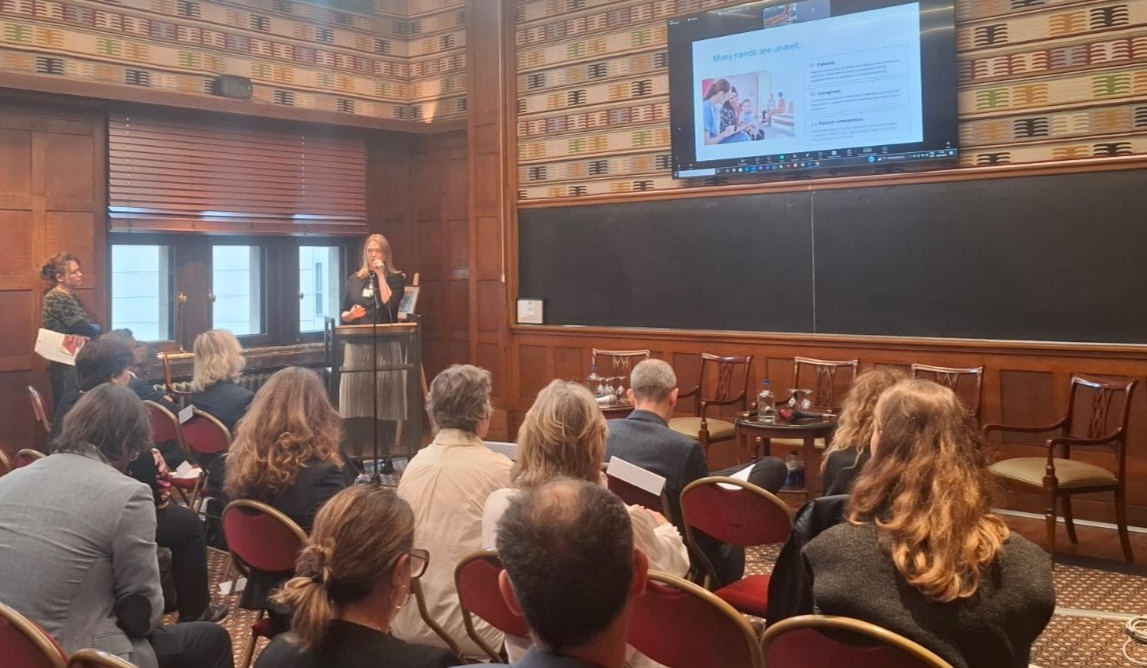
The next discussion explored scientific and organisational perspectives on improving rare disease care. Maria Luisa Zedde, Neurologist from the Local Health Authority of Reggio Emilia, Italy, emphasised the need for structured, multidisciplinary approaches in treating rare cerebrovascular diseases. She proposed stroke care models as templates for rare neurological disease management.
Giuseppe Turchetti, Health Economist at Scuola Superiore Sant’Anna, Pisa, Italy, introduced the ERN Pathway methodology, a structured framework for improving rare disease care. He highlighted how European Reference Networks (ERNs) facilitate collaboration and improve patient outcomes by streamlining multidisciplinary care, monitoring efficiency indicators, and coordinating specialist input.
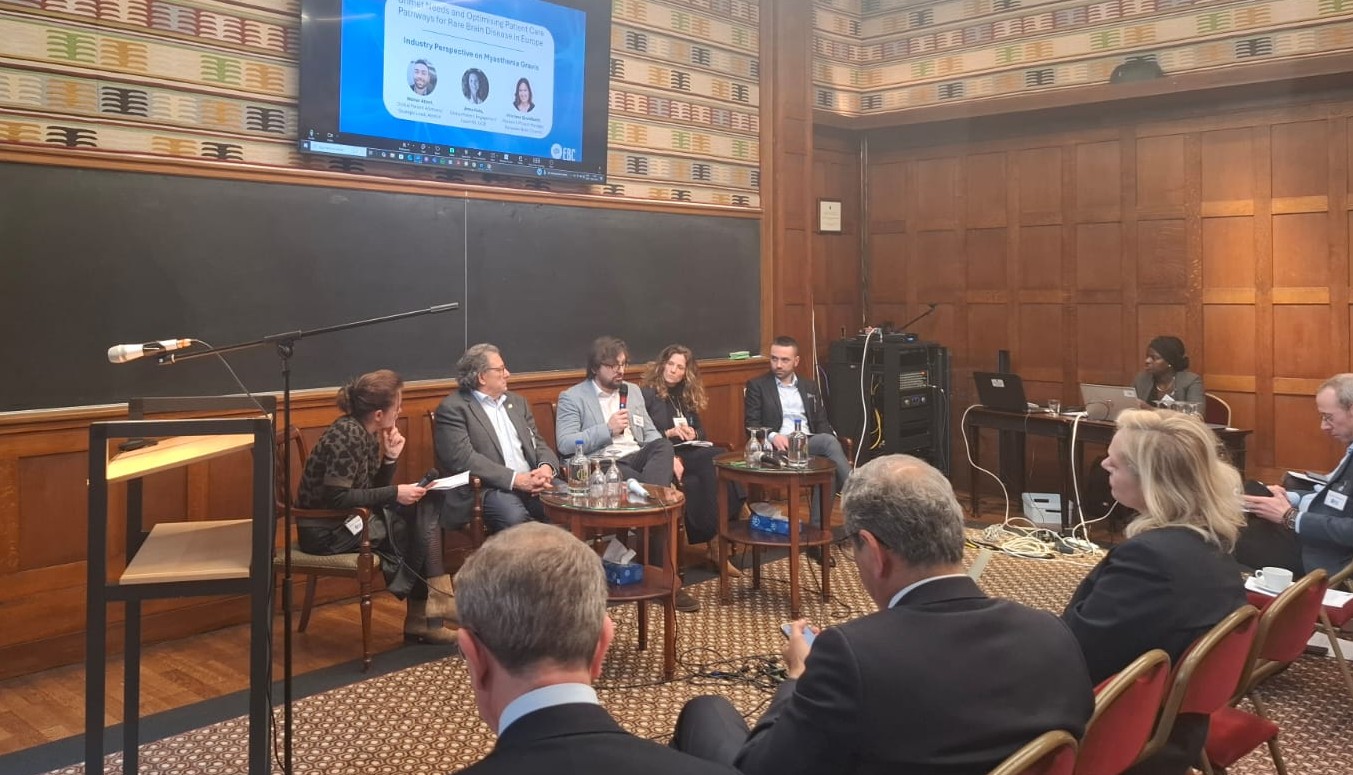
A third discussion featured Alexis Arzimanoglou, Neurologist and Coordinator of the European Reference Network for Rare and Complex Epilepsies (EpiCare). He highlighted the challenges of developing patient care pathways, particularly in diseases requiring multidisciplinary coordination. He pointed out the disruption in continuity of care during the transition from paediatric to adult neurology, where children with complex neurological conditions often struggle to find adequate adult care as they grow up.
Alexis also addressed genetic screening for rare epilepsies, emphasising the unequal access to testing across Europe. While France offers state-funded genetic testing, in other countries, patients must pay thousands of euros out-of-pocket. He called for uniform policies to ensure equitable access to genetic diagnostics and early intervention.
Lorenzo Maggi, a neurologist specialising in neuromuscular and neuro-immunological disorders, discussed the heterogeneity of myasthenia gravis treatment across Europe. He noted that clinical guidelines for myasthenia gravis had not been updated at the European level since 2010, despite significant advancements in treatment. He stressed that harmonisation of care standards, updated guidelines, and better coordination across European neurology societies were urgently needed. Lorenzo also touched on the challenges of rare disease registries, citing that many past initiatives had failed due to a lack of long-term funding and administrative hurdles. He argued that the sustainability of registries should be a core policy priority.
Industry representatives joined the discussion to provide insights into therapeutic innovations and accessibility challenges. Walter Atzori, Global Patient Advocacy Strategic Lead from Alexion, and Anna Kole, Global Patient Engagement Lead MG from UCB, discussed the rapid evolution of myasthenia gravis treatments. While new targeted therapies have demonstrated significant clinical benefits, they remain costly and unevenly accessible across Europe. They emphasised that patient-centric approaches, real-world evidence collection, and collaboration with policymakers are essential to ensuring that innovative treatments reach all eligible patients.
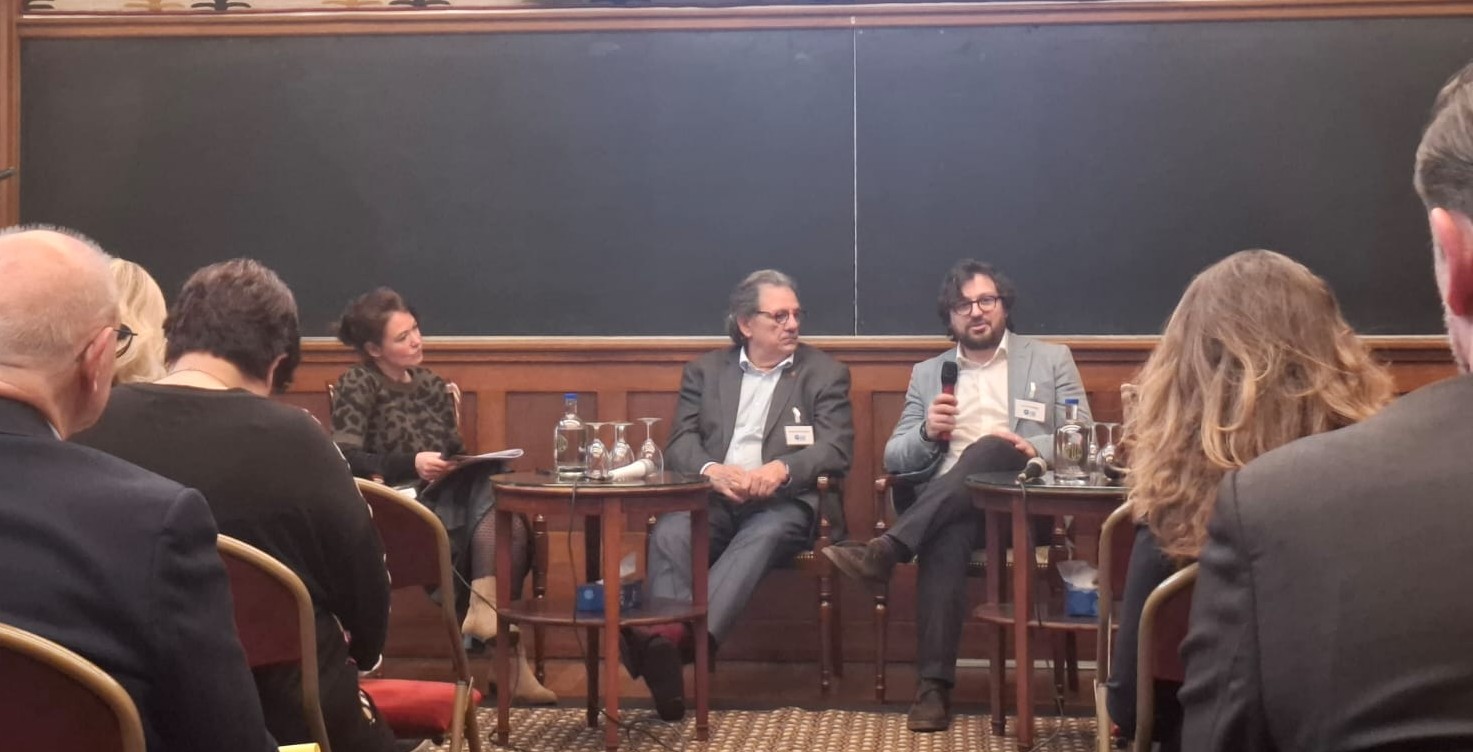
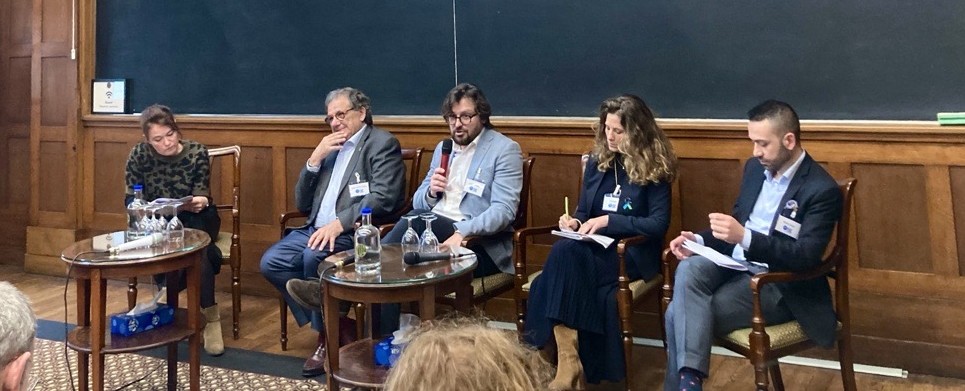
The European Brain Council (EBC), in collaboration with the Institute of Management of Scuola Superiore de Sant’Anna, was very pleased to launch the ‘Rethinking Myasthenia Gravis’ project on the occasion of EBC’s Rare Disease Day event.
Rethinking Myasthenia Gravis (MG) is a research-driven project that will offer policy recommendations to make tangible changes with the aim to improve the lives of people living with Myasthenia Gravis across Europe.

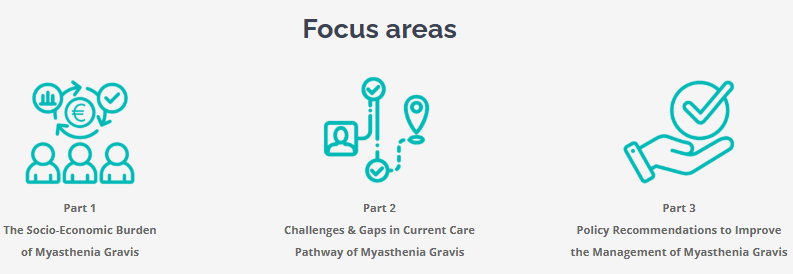
Session 3: Towards a Rare Brain Disease Ecosystem and Knowledge Hub
The last session introduced the concept of a Rare Brain Disease Ecosystem and Knowledge Hub, an initiative designed to centralise resources, foster collaboration, and improve healthcare pathways for rare neurological disorders. Frédéric Destrebecq, Executive Director of the European Brain Council, moderated the discussion, highlighting the need for cross-disease coordination.
Julian Grosskreutz, Chairman of the European ALS Coalition, presented the coalition’s efforts to reduce inequalities in ALS treatment and accelerate research and policy action. He noted that ALS serves as a case study for broader rare disease policy challenges, including delayed diagnosis, fragmented care pathways, and regulatory barriers.
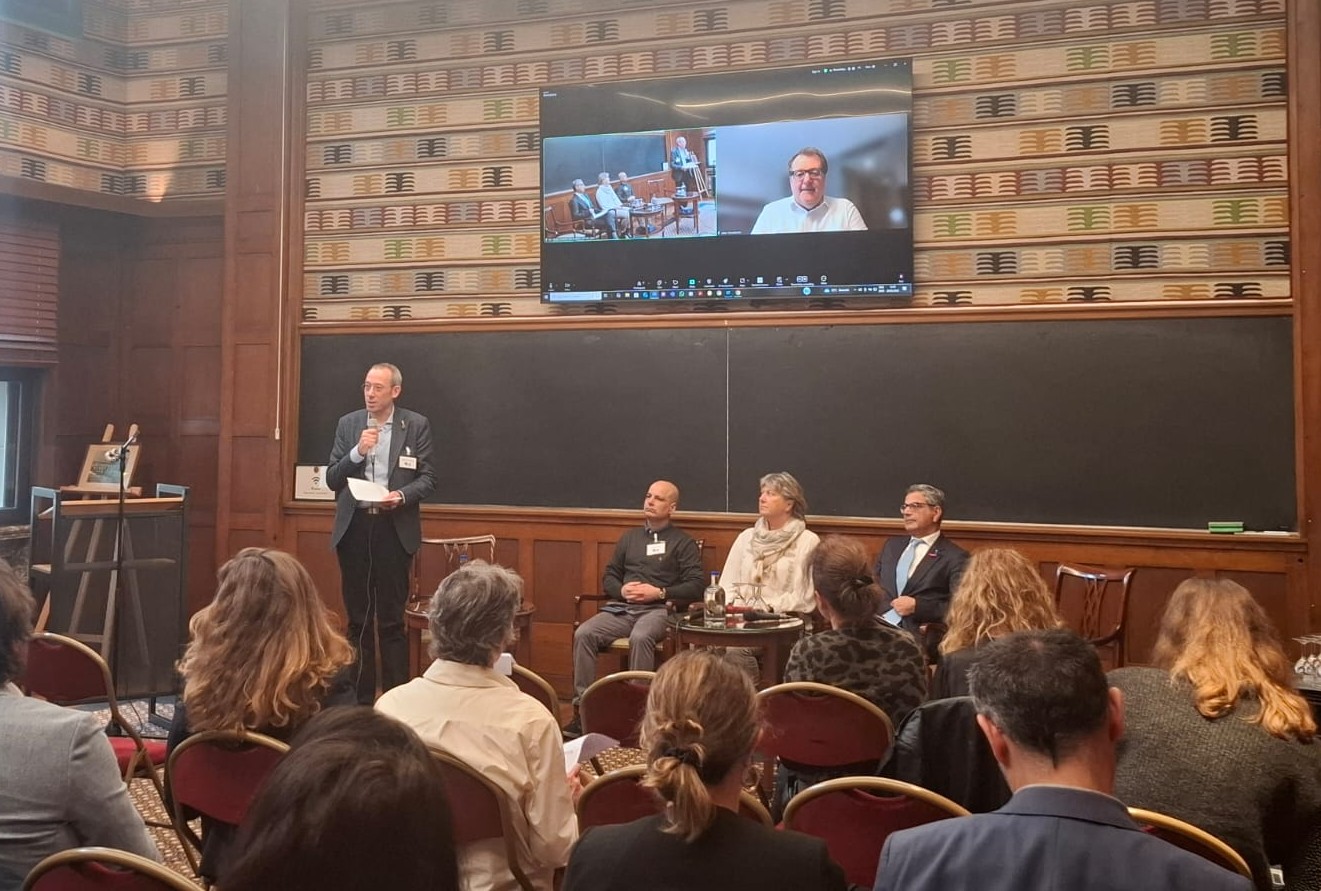
This multistakeholder panel included Astri Arnesen, President at the European Federation of Neurological Associations, Sameer Zuberi, Neurologist and Past President at the European Paediatric Neurology Society and Kailash Bhatia, Neurologist, President-Elect from the European Academy of Neurology and co-chair of the scientific panel on rare disorders. The discussion emphasised the need for stronger transition care models, harmonized care pathways, and ensuring equitable access to treatment across Europe.
Another key issue is the inefficient use of health data within the European Health Data Space. Despite large-scale data collection, it is not being fully utilised to improve care. There is also concern about health technology assessments (HTA), as inconsistent evaluation processes across countries may lead to good therapies being rejected or inadequate treatments being approved. Greater patient involvement in HTA processes is crucial to ensure cost-benefit analyses reflect real-world patient experiences.
The discussion emphasised the challenges of transitioning paediatric patients with rare diseases into adult care, highlighting the emotional and logistical difficulties faced by families. Children who have long-term relationships with their paediatric neurologists must suddenly adapt to new specialists, often losing access to familiar therapists and support networks. Efforts are underway to create standardised transition guidelines across Europe, led by the European Paediatric Neurology Society (EPNS) and the European Academy of Neurology (EAN).
Additionally, the importance of engaging general neurologists in rare disease care was underscored. Many neurologists view rare diseases as an isolated specialty, but greater awareness, referral pathways, and education are necessary to improve patient outcomes. The A-R-E-S-T framework (Awareness, Referral, Education, Science, Technology) was introduced as a structured approach to bridge these gaps. The session also highlighted the role of technology and AI in addressing expert shortages and enabling multidisciplinary, cross-border collaboration. AI-powered tools, virtual consultations, and digital registries can improve rare disease diagnostics and care.
The meeting concluded with optimism, acknowledging that scientific advancements and policy initiatives are moving in the right direction, though faster implementation is still needed.
Please find the event’s presentations below:
Conclusions and Next Steps
The launch of the Rethinking Myasthenia Gravis project has been recognised as a major milestone, expanding discussions to include other rare brain diseases will be key. The initiative is gaining further momentum in establishing a Rare Brain Disease Ecosystem and Knowledge Hub, with a formal call to action for stakeholders to contribute to its development. A key focus is on combating misinformation by ensuring that policies and advocacy efforts are backed by scientific data. EBC remains committed to fostering research, collaboration, and policy engagement to prioritise brain health.
The Rare Disease Day event 2025 concluded with a call to action for policymakers, healthcare professionals, researchers and patient advocates. Key takeaways included the need for coordinated policy actions at global, EU, and national levels, the importance of patient-centred care models, and the role of European Reference Networks in improving rare disease management.
The event concluded on an optimistic note, with participants reaffirming their commitment to driving policy change, improving patient outcomes, and strengthening the rare disease community.
The event served as a platform for brainstorming on how to optimise care and treatment pathways for rare brain diseases. Thank you to everyone who joined us and took part in this crucial conversation!
